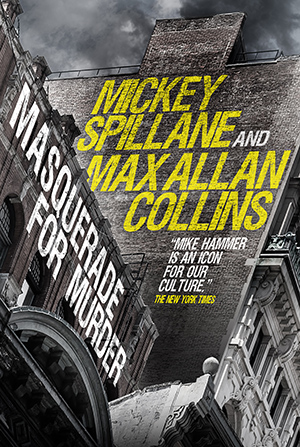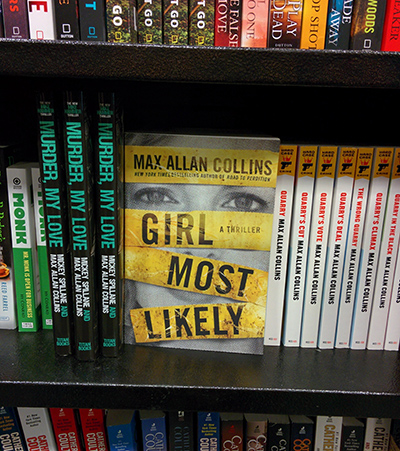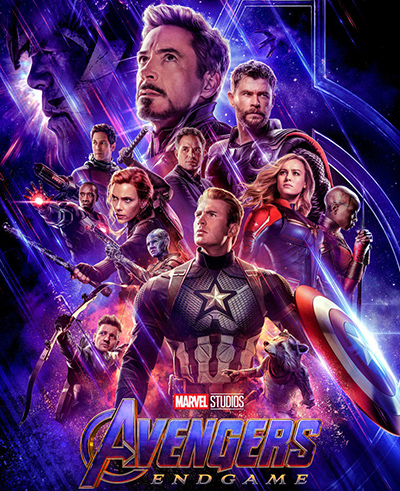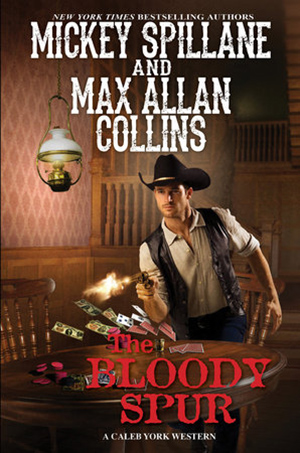As Christmas miracles go, the finale of the following is decidedly minor, although the whole experience felt major, with some nice surprises along the way.
For the past three years or so, as long as I’ve been involved in getting the Spillane/Collins “Caleb York” series up and running, I have been pestering my PR contact at Kensington Books about trying to get me into True West magazine. There are only two major magazines about the old west (and western movies), True West and Wild West. Both are quite good, and both do some book reviewing. True West seems to lean somewhat more to pop culture-type material, which is my own leaning obviously, and they do a monthly last-page-of-the-issue with various people (actors, authors, musicians and assorted friends of the real and reel west). That interview slot seemed like a great place to introduce myself as a western writer to a big audience – a long shot, but why not try?
I brought this up to Karen, my hard-working PR person at Kensington, who agreed that this was a long shot but worth trying. As the months passed, we didn’t get anywhere. When Barb and I went to Killer Nashville, we had a couple of nice meals with Karen, and I really, really pushed for True West. She would try. But we did know it was a long shot, right?
Finally True West expresses interest – huzzah and hooray! One of the editors wants to interview me – in person. Where do I have to go? Utah? Montana? New Mexico? Arizona? Texas? No, the editor wants to come to me. This sounds incredibly ambitious of him, until I learn he lives in Iowa City. About thirty-five miles away.
All this time one of True West’s editors has been in my backyard! Has been living in the town where both Nate and I went to college (not at the same time), and where Barb and I routinely travel once a month or so for a nice meal at one of any number of terrific restaurants, and for me to drop by Daydreams comic book shop and one of the best bookstores anywhere, Prairie Lights, where I’ve done readings half a dozen times over the years.
I offer to go to him, but editor Stuart Rosebrook wants to come to me. Wants to get a look at Muscatine. We meet at Elly’s, a soup/sandwich/salad place (very good) with a wonderful view of the Mississippi. Stuart and I hit it off immediately – we talk movies and books and Wyatt Earp for several hours, and even manage to eat lunch in the process. I am also interviewed, but mostly we just luxuriate in our mutual interests.
Turns out Stuart is, among other things, the book editor at True West, and the guy who does the monthly back-of-the-issue interview, which is what I’m going to get (yipee!). We spend so much time talking about our shared enthusiasms that he has to follow up with e-mail questions.
Perhaps most interesting is that Stuart’s father turns out to be Jeb Rosebrook, a very successful screenwriter for movies and TV. Among many other things, he wrote Junior Bonner, which starred Steve McQueen and was directed by Sam Peckinpah, no less. He wrote the s-f cult favorite, The Black Hole, for Disney, and his TV writing credits include The Waltons and The Yellow Rose TV series with his friend Sam Elliott (he also produced). His many TV movies include I Will Fight No More Forever (Emmy nominated), Hobo’s Christmas, Mystic Warrior, The Gambler II and The Gambler III. In recent years he’s returned to writing novels, his previous one (Saturday) being decades ago and predating his film and TV work.
At our first meeting, Stuart says his father and mother are coming for a visit over the Christmas holidays. He suggests we get together, so I can meet his dad. The idea of sitting down with a real pro – a guy who wrote for Sam Peckinpah, worked any number of times with Sam Elliott, and wrote dialogue for Jack Kelly’s Bart Maverick (!) in the second Gambler movie, well…it’s enough to make me temporarily put aside my hermit-like ways.
As a nice cherry on the sundae, when Stuart tells his dad about me, turns out Jeb has read my work, and liked it!
So, as the photo that accompanies this piece will indicate, we got together. We had a lovely Christmas Eve eve feast at Peking Restaurant in Muscatine with Stuart and his wife Julie, 21-year-old son (also named) Jeb, 16-year-old daughter Kristina, as well as Jeb and his wife Dorothy. Turns out I’m not the only writer who married a beautiful blonde.

(L to R) M.A.C., Jeb Rosebrook, Stuart Rosebrook
The evening was really a delight, and I hit it off with both Jebs and really everyone at the table – even Barb! Sitting between Stuart and his father, I had a conversation that covered so many topics of interest to me that my head is still spinning. Jeb, who at 82 is younger than you are, is at work on a trilogy of novels (the first two are available now from Amazon, The Charlemagne Trilogy). He has been reading Nate Heller, so I brought him Better Dead, but also Road to Purgatory.
About that. Everybody at the table had done their homework – the night before, Barb and I re-watched Junior Bonner, a charming character study about rodeo life that is quite unlike anything else Peckinpah ever did; and the Rosebrooks watched Road to Perdition. Everybody had good things to say about both films. Kristina, not a regular consumer of R-rated fare, liked Perdition but the violence was a little extreme for her (she better stick with Junior Bonner for her Peckinpah fare!). I brought along (to have them signed) Junior Bonner on Blu-ray and DVDs of The Yellow Rose (complete series), I Will Fight No More Forever, and the collected Gambler TV movies. Barb and I signed an Antiques that Stuart had brought along, and Jeb gave me generously signed copies of three books of his, two of which are in the ongoing trilogy.
Now this is fun. I signed Road to Purgatory to Jeb; he signed his novel Purgatory Road to me. Great minds.
Comes the surprise ending. Stuart had asked to borrow one of my laser disc players because he had a Japanese laser disc of Junior Bonner that he wanted to screen. He has, for some time, been trying to find the original version of Junior Bonner with the song “Arizona Morning” over the opening credits. But the home video release in the United States has (as sometimes happens with such releases) a different song substituted over the opening. If you go to the Amazon reviews of Junior Bonner, you’ll find many fans of the film complaining about the home video release not including the real opening song.
Well, I have three laser disc players, so I just gave one of them to Stuart. He was happy to have it, though neither of us were optimistic about the chances of the Japanese version being the original cut.
The next morning, the Christmas miracle: the Japanese laser disc had the original version with the real opening credits song! Jeb Rosebrook hadn’t heard it for years, and listened to it on the laser disc at least twice. And Stuart was delighted, a Holy Grail found, and that’s the minor but major Christmas miracle.
Another is that Stuart delivered to me an advance copy of the February issue of True West with my back-of-the-book interview. It is perhaps the best single piece on me I’ve ever read. Stuart did a masterful job of distilling and arranging quotes from me into something coherent and informative, from a several hour rambling conversation with me and a few e-mail answers to follow-up questions.
Watch for that issue! Its cover has Dennis Quaid as Doc Holliday in the underrated film, Wyatt Earp.
Happy holidays, everybody!
* * *
Looking for a way to spend your Amazon gift cards? Check out Skyboat Media, which has just released the audio of Quarry’s Climax (I’ll talk more about this terrific release soon).
Here’s info about Back Issue #102, which has a wonderful article about Wild Dog. I’ll talk about this more in an upcoming update.
And here’s a nice write-up about Otto Penzler’s Big Book of Christmas Mysteries, which includes my “A Wreath for Marley,” probably my favorite of all my short stories.
M.A.C.






